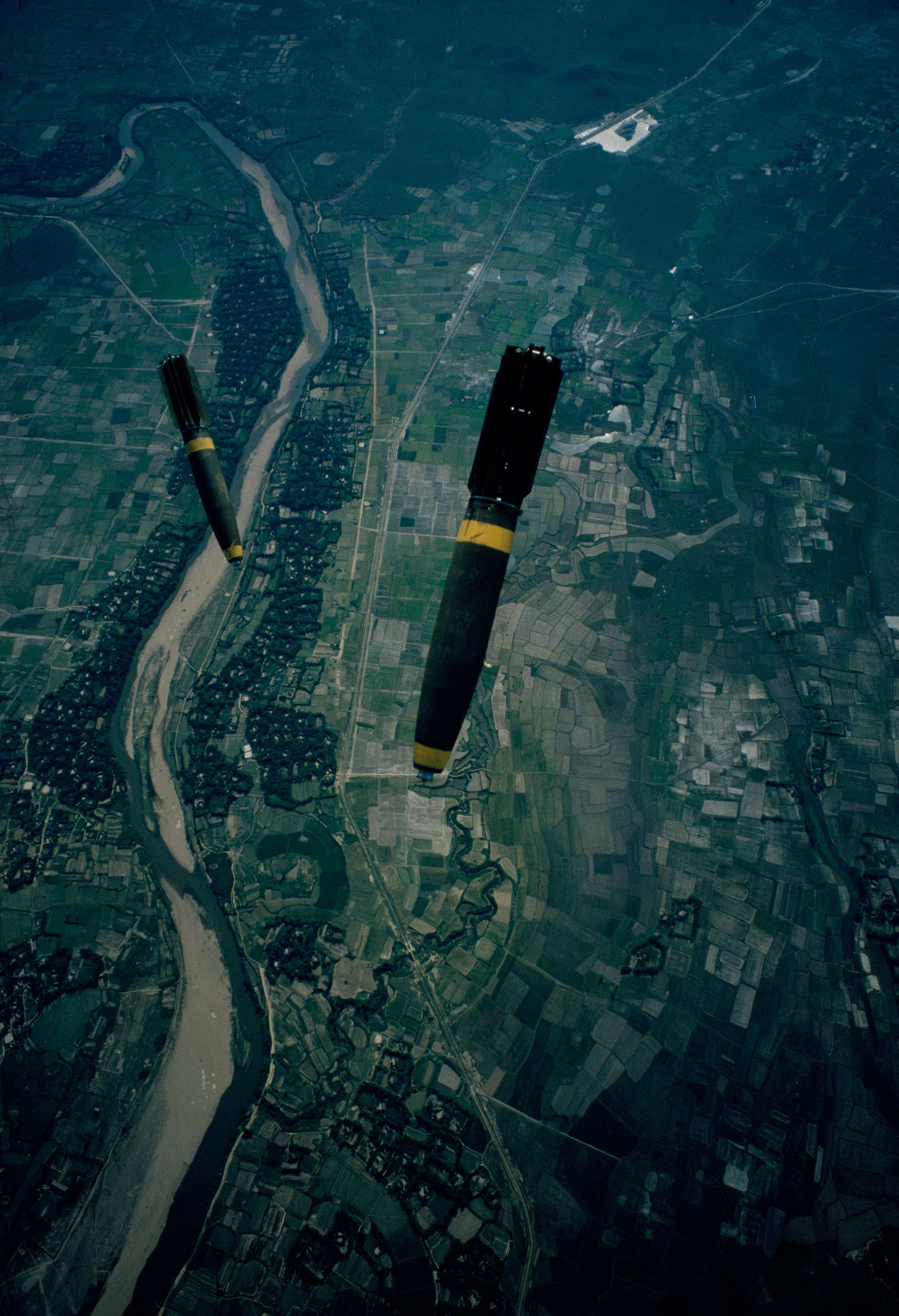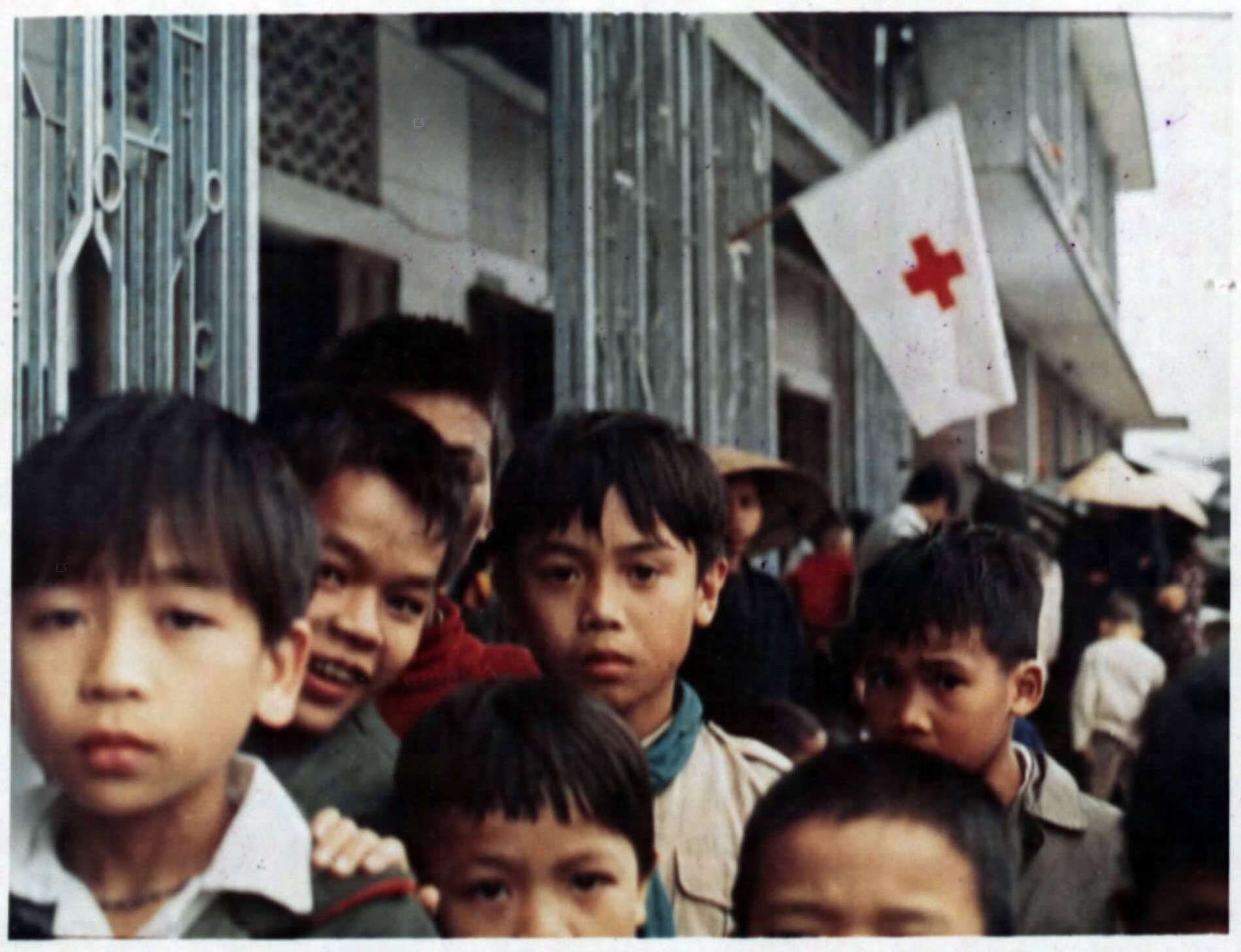The Vietnam War was a turbulent time in American history, with vocal opposition to it on the home front and thousands of Americans in harm's way in Southeast Asia. Though the war ended over forty years ago, it is still difficult to get a clear picture of what happened. The unit below, created as part of a professional development experience for the National Archives, brings poetry together with resources from the archives to help students explore multiple perspectives on the war and its consequences for those it affected directly.
Poems:
Materials:
- Enough slide enclosures for all students (either purchased in a camera store or handmade)
National Archives Photographs & Documents:
- Bombs Fall on the Truong Quang Tin Railroad Bridge
- Vietnamese Children Outside the Viet Huong Refugee Center, April, 1972
- After Action Report, "The Battle of Hue, 2-26 February 1968"
CCSS.ELA-LITERACY.CCRA.R.1
Read closely to determine what the text says explicitly and to make logical inferences from it; cite specific textual evidence when writing or speaking to support conclusions drawn from the text.
CCSS.ELA-Literacy.CCRA.R.7
Integrate and evaluate content presented in diverse media and formats, including visually and quantitatively, as well as in words.
CCSS.ELA-LITERACY.CCRA.R.9
Analyze how two or more texts address similar themes or topics in order to build knowledge or to compare the approaches the authors take.
Warm up:
Go quickly around the room and ask each of your students to share an association they have with the Vietnam War. If a student does not have an association, they can say “pass” and you can return to them after all their classmates have spoken.
Perspective taking with slide enclosures:
Place your students in pairs, and give each pair a slide enclosure (a small cardboard square with a rectangular cut out for a transparency that was used in slide projectors). Ask them to look through the opening to focus on something close to them, then on something far away. Ask them to write down the details they see close up, and do the same for what they notice from far away.
Hold a large group discussion: What kinds of details do they see up close? What kinds of things do they see from far away? What is the difference? Introduce the idea of perspective—that the vantage point from which you look at something influences what you see.
Practicing close noticing:
A. With photographs:
Show your class the image from the National Archives of bombs falling. Ask them to write down the details they notice—not their interpretations, but what they actually see.

Show them the image of the Vietnamese children and ask them to write down the details they notice is this photograph.

Ask your students to get back in their pairs to share what they noticed and think about the differences in perspectives.
Whole group discussion: What is the perspective of the photograph of the bombs? Using the details they just noticed for reference, what is the evidence for their conclusion? From where do your students think this photo was taken? What is the perspective of the photo of the Vietnamese children? From where do your students think this photo was taken? What can we learn from the focus of each of the photos? How does each perspective make us feel?
B. With military prose:
Ask your students to silently read pages 8-9 of “After Action Report, The Battle of Hue, 2-26 February 1968” twice. Each time they read, they should circle the things that jump out at them, including vocabulary they might not know.
Ask your students to gather in small groups to share what they have noticed and modify their own lists as they learn from each other.
Cover any or all of the following questions with your students in a whole-group discussion:
- What are the details you noticed in the writing?
- What is the perspective of the writer (close/far/both)? (Make sure your students cite the details they discovered when they read the document.)
- What do you notice about the language that has been used? Is it the same throughout the document? Does it change at any point? If so, where? Why do you think the language changes at this point?
A. “Facing It” by Yusef Komunyakaa
Project the poem “Facing It” so all students can read it. Ask them to read silently and write down the words and phrases that jump out at them. Ask one student to read the poem aloud to the class, while the listening students write down words and phrases they have not noticed before that they think might be important. Repeat this process with a second student reading aloud.
Ask your students to get back in their small groups to share what they noticed and why they thought it might be important in the poem.
Whole-class discussion, relying on what your students noticed and talked about in their small groups:
- From what perspective is Yusef Komunyakaa experiencing the Vietnam War Memorial? What details in the poem lead you to think this?
- What is Komunyakaa’s perspective on the Vietnam War? What details in the poem support this interpretation? (At this point you might want to add some contextual information on Yusef Komunyakaa if it has not already come out in the conversation.)
B. “Kissing in Vietnamese” by Ocean Vuong
Project the poem “Kissing in Vietnamese” so all students can read it. Ask them to read silently and write down the words and phrases that jump out at them. Ask a student to read the poem aloud to the class, while the listening students write down the words and phrases they have not noticed before that they think important. Repeat this process with a second student reading aloud.
Ask the students to gather again in their small groups to share what they noticed. Ask each group to pick a phrase or two that was particularly compelling, and have them create a tableau with their bodies (a still picture with no voices) that illustrates this phrase or these phrases.
Ask each group to show their tableau to the other members of the class. What do the non-presenting students notice? What language in the poem do they think the tableau is trying to present?
Whole-class discussion, relying on what the non-presenting students noticed as evidence:
- What were the feelings expressed by the tableaux?
- What specific body positions showed this?
- What perspective is represented in the poem “Kissing in Vietnamese?
What do we learn from poems that we do not necessarily learn from official reports from the field or official photographs? Why do you think this is the case? Do the different kinds of language used, or the different perspectives taken, help you answer this question? Why do we need to experience different kinds of communication—photographs, official reports and poetry—when learning about the war?
- Ask your students to write a poem or prose piece in the “voice” of something or someone either from the photos, the report, or the poems. If they’d like, they can change the perspective, e.g. using the voice of the author of the field report to write a letter to his son or daughter.
- Teach a lesson about personification and persona. Tell your students they will be using their imaginations to gain the perspectives of others through the use of specific kinds of language.
